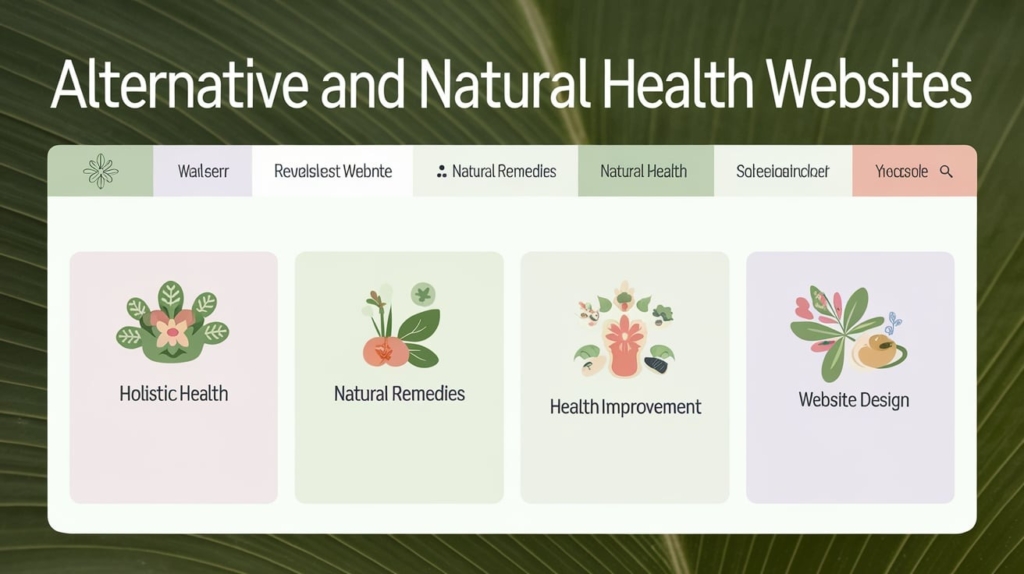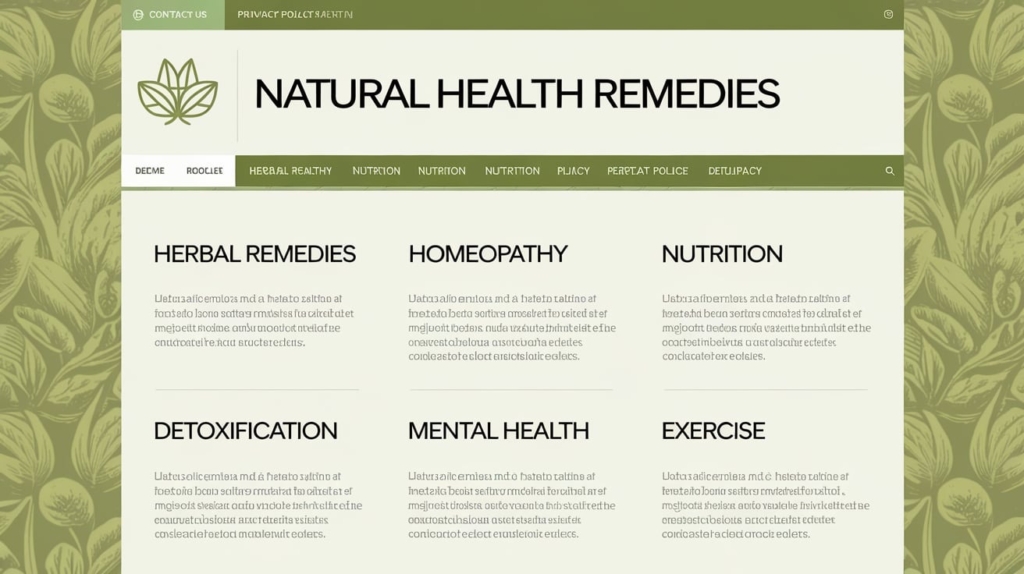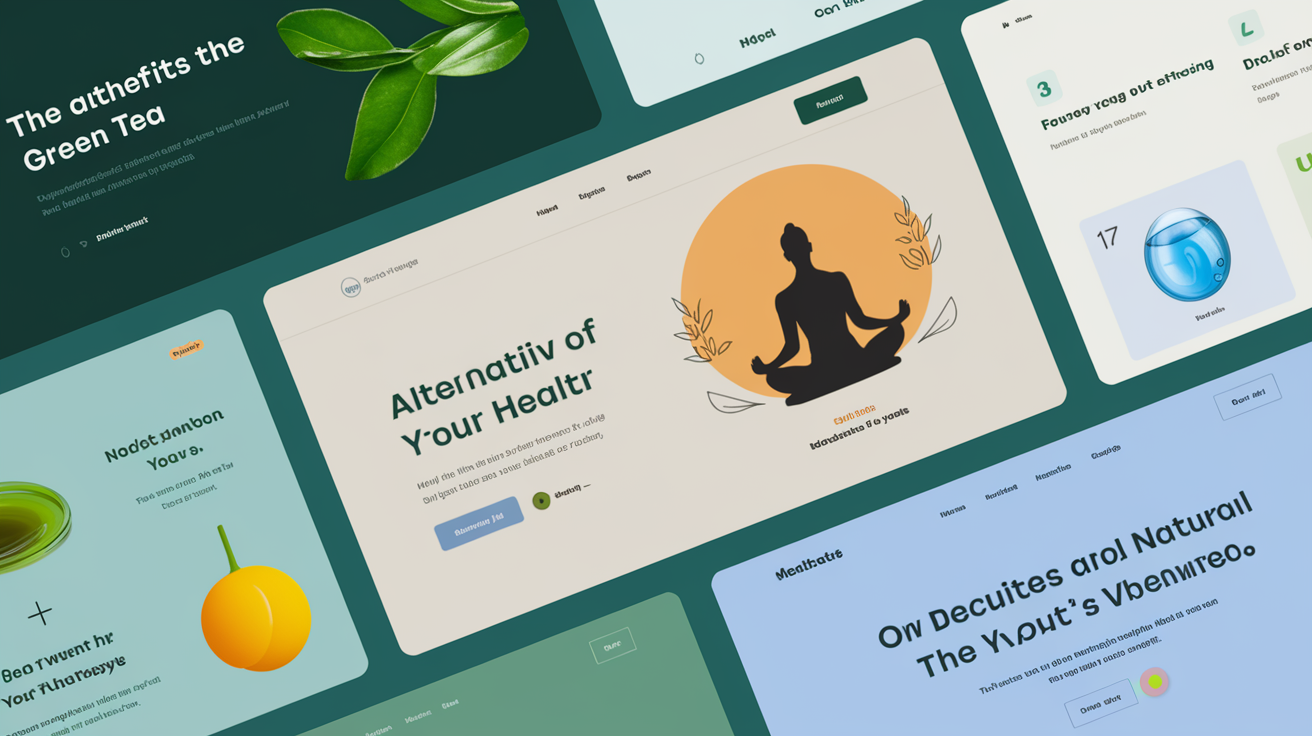Introduction
In today’s world, more people are seeking alternative and natural remedies for their health and wellness needs. As the desire for holistic healing grows, so does the need for credible, user-friendly, and informative websites in the alternative and natural health space. Whether you’re a practitioner offering holistic treatments, a wellness coach, or an advocate for natural remedies, creating a website that engages, educates, and builds trust is essential.
This pillar post is designed to provide a comprehensive guide to alternative and natural health websites. From design principles to content strategies, we will cover the essentials of building a successful online presence for alternative health practitioners. You’ll also find practical examples of top-performing websites and proven tactics to attract and retain a loyal audience.

Related Posts
- Best Performing Healthcare Websites by Category
- Key Features of Health and Wellness Websites
- Digital Marketing Strategies for Healthcare Websites
Design Principles for Alternative and Natural Health Practitioners
The design of your natural health website is just as important as the content it contains. It sets the tone for how visitors will engage with your information and services. A well-designed website fosters trust, comfort, and credibility, all of which are critical when dealing with sensitive health topics. Below are some essential design principles that will make your website both functional and aesthetically appealing to your audience.
Prioritize User Experience (UX)
A well-designed user experience is paramount when developing a website for natural health. Users visiting a health-related site are often looking for answers to pressing questions. The easier it is for them to navigate your site, the more likely they are to stay and trust your services.
Key UX features for alternative health websites:
- Clear, Simple Navigation: Keep the menu simple and intuitive. Visitors should be able to find services, blog posts, testimonials, and contact information within a few clicks.
- Mobile-Friendly Design: With an increasing number of users accessing websites via mobile devices, your website must be optimized for mobile viewing.
- Fast Load Times: Slow websites deter visitors. Ensure that your site loads quickly to keep users engaged.
- Search Functionality: Including a search bar allows users to quickly find specific topics, natural remedies, or services on your website.
Reflect Holistic and Natural Elements in Your Aesthetics
Your website design should reflect the calm, healing nature of alternative and natural health practices. Soft color palettes, soothing imagery, and simple layouts work best for creating a welcoming environment.
Aesthetic elements to consider:
- Color Palette: Use earthy tones like greens, browns, and blues, which evoke a sense of calm and nature.
- Images: High-quality, relevant images such as plants, nature scenes, or people in relaxing settings can help reinforce your brand’s message.
- Typography: Opt for readable, clean fonts. Avoid overly decorative text that could make it difficult to read.
Trust Signals Are Essential
When it comes to health, trust is a top priority. Website visitors must feel confident that the information they are receiving is credible. A professional, well-organized design, coupled with trust signals, helps build this confidence.
Effective trust signals include:
- Certifications and Qualifications: Display any certifications, degrees, or affiliations with recognized organizations clearly on your site.
- Testimonials and Reviews: Showcase client testimonials, success stories, or user-generated content that speaks to your expertise and the effectiveness of your services.
- Privacy Policies and Security: Make sure visitors know their data is secure, especially if you offer online consultations or accept payments.

Related Posts
- Website Design for Specific Healthcare Niches
- Online Courses and Resources
- Additional Resources for Healthcare Website Design
Examples of Top Alternative and Natural Health Websites
Looking at well-established examples can help you better understand the design and content strategies that work. Here are a few alternative health websites that have excelled in both areas:
Dr. Axe
Dr. Josh Axe’s website is a leading example of a natural health website. The design is clean, with a mix of educational content, blog posts, product offerings, and free resources. His site includes:
- Holistic health resources like articles and recipes.
- Product recommendations for natural supplements.
- A clear and intuitive layout that focuses on user engagement.
Mindbodygreen
Mindbodygreen is a leading wellness website that incorporates both alternative and natural health content seamlessly. The site features:
- A variety of wellness topics including fitness, nutrition, and holistic healing.
- Clean, minimalist design that emphasizes visuals and clear navigation.
- Educational articles that establish the site as a trusted authority on wellness and healthy living.
The Health Coach Group
This site is dedicated to offering coaching services, holistic wellness resources, and personalized consultations. Key features include:
- Focused content on health coaching and natural wellness practices.
- Easy-to-navigate service offerings like health coaching and e-courses.
- Well-designed landing pages that drive conversions for clients seeking personalized help.
Content Strategies for Holistic Health, Natural Remedies, and Health Improvement
When it comes to content creation for your alternative health website, you should focus on providing value-driven, informative, and educational resources. Your audience is likely searching for specific solutions to health concerns or looking to improve their overall wellness through natural means.
Holistic Approaches to Health
A holistic health approach encompasses physical, emotional, and spiritual well-being. Content that reflects this mindset can help your audience feel more aligned with your values and services.
Content ideas:
- Guides on Mind-Body Healing: Write articles that explain how mental health affects physical health and vice versa.
- Holistic Living Tips: Share tips on maintaining a balanced life, such as incorporating mindfulness practices or natural therapies into daily routines.
- Case Studies and Success Stories: Document how clients have benefitted from holistic treatments like acupuncture, herbal medicine, or meditation.
Natural Remedies and DIY Health Solutions
Natural remedies are a cornerstone of alternative health practices. Many visitors to your website will be looking for natural ways to treat common ailments, manage stress, or boost immunity.
Content ideas:
- Herbal Remedies: Create detailed posts about the benefits and uses of different herbs for specific conditions (e.g., ginger for digestion, lavender for stress relief).
- DIY Health Solutions: Offer easy-to-follow guides on making your own natural health products like face masks, essential oil blends, or detox drinks.
- Nutrition and Wellness: Discuss the importance of a healthy diet and how food can be used as medicine, highlighting natural, whole foods and their healing properties.
Educational Resources and Blogs
Blogging is a powerful tool for establishing authority in the health space. Regularly publishing content that educates your audience about natural health practices will help improve SEO and build trust.
Blog post ideas:
- “The Benefits of a Plant-Based Diet for Holistic Health”
- “How to Incorporate Yoga and Meditation into Your Daily Routine”
- “Top 10 Natural Supplements for Immune Boosting”
FAQs
How can I make my natural health website stand out?
Focus on creating high-quality, educational content that provides real value to your audience. Ensure your website design is professional, user-friendly, and mobile-optimized, while also incorporating trust signals such as testimonials and certifications.
What type of content works best for alternative health websites?
Content that educates, empowers, and offers practical solutions works best. Focus on holistic health tips, natural remedies, success stories, and expert advice to establish authority and build trust.
How important is SEO for alternative health websites?
SEO is critical for attracting organic traffic. By creating informative blog posts, optimizing for keywords, and ensuring your website is easy to navigate, you can rank higher in search engines and reach more people seeking alternative health solutions.
What are some design tips for wellness websites?
Prioritize a clean, calming design with easy navigation. Use soft, natural colors and ensure the website is mobile-friendly. Make it easy for users to find relevant content quickly.
Key Takeaways
Designing a successful alternative and natural health website requires a balance between strong design principles and informative, valuable content. By focusing on a user-friendly experience, incorporating holistic and natural health content, and establishing trust through expert-backed resources, you can create a website that attracts and engages a loyal audience. With the right combination of aesthetics, functionality, and expertise, your website can become a go-to resource for those seeking alternative health solutions.
- Design for Trust and Engagement: Focus on user-friendly design, mobile optimization, and trust-building elements like testimonials.
- Content that Educates and Empowers: Offer practical, valuable content on holistic health, natural remedies, and wellness improvement.
- SEO and Authority: Incorporate SEO best practices to ensure your site ranks and establishes authority in the natural health niche.
